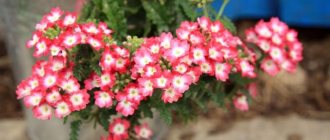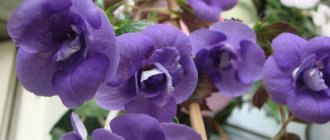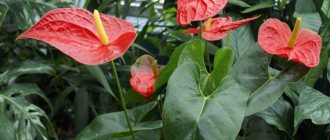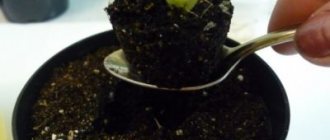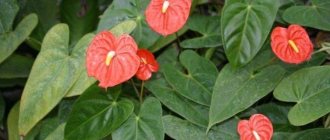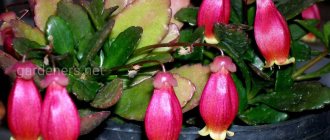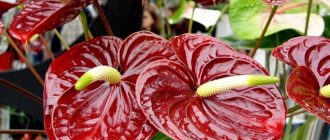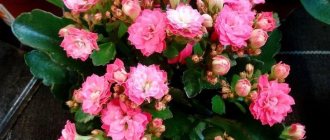Stachys or chistets is a perennial herbaceous plant of the Lamiaceae family. There are several annual species and subshrubs.
The decorative variety is Chistets Byzantine or Stachys woolly. Due to its strong pubescence, its stems and leaves have a silvery color.
In the wild, the woolly chickweed grows in Turkey, Iran, Armenia, Crimea, and the North Caucasus. As an ornamental garden variety, it is found in all regions of Russia.
Use in landscape design
Quite often, when creating landscape design, pubescent plants are used. They cover the entire soil, creating an amazing “canvas”. Since chistema forms a silvery “carpet”, it is ideal for creating contrasting compositions with other plants. For example, “bunny ears” look great in an ensemble with a peg or two-color cross. They form a wonderful tandem with Carpathian bell or lavender. The combination of silver stachys and orange marigolds looks very beautiful.
Woolly brush is used for carpet planting or to form borders in flower beds and flower beds. This plant looks good in rockeries, it can be used for alpine slides, since it creates a contrast with the stone, and is also unpretentious to light and soil.
Stachys flower stalks are used to create bouquets. Velvety leaves with silvery fibers are used as the basis of a bouquet composition. They give it color and splendor.
For more information about the chistets, see the following video.
Application area
Chistets is used in different ways due to its unique biological composition.
| Stachys byzantine, monier | ethnoscience | Landscape design, gardening | Cooking |
| Leaves | Make decoctions and infusions | Reproduction by cuttings | The Stachys sieboldii variety is prepared in batter. Add to salads. Vegetable casseroles. Omelette with leaves and peas |
| Flowers | Used for preparing decoctions and tinctures | Add to tea mixtures | |
| Roots | Squeezing out the juice | ||
| Seeds | They make oil and use it for medicinal purposes. | Growing seedlings | |
| Whole plant | Along the edges of borders and flower beds. Low-growing varieties are used as a background. Planted by dividing the bush |
Planting Chistets Byzantine
Chistets Byzantine is a beautiful and decorative bush that fits perfectly into any landscape design. At the same time, planting the crop will take a minimum of time and effort, and in the future the plant will delight you with its unusual beauty
To get a healthy and strong plant, it is important not only to plant the seedlings correctly, but also to carry out competent preparatory work. Let's consider the entire process of planting Chistets Byzantium in individual stages
Stage 1. Selection and acquisition of planting material Chistets Byzantine
First of all, every gardener needs to purchase high-quality and healthy planting material. If an adult plant of this species is already growing on your site, you can use one of the above propagation methods. If you don’t have an adult bush and you don’t have the desire to breed the crop, then you can buy ready-made seedlings or seedlings of Chistets Byzantina in specialized garden stores or nurseries that professionally breed plants. Most often, stores sell seedlings in the form of seedlings in separate pots. Before purchasing, it is important to carefully check the appearance of the planting material. Young seedlings should not have visible damage, yellow or rotten areas. The soil in pots must be clean and moist. When choosing planting material for Chistets Byzantina, pay attention to the botanical features and appearance of a particular variety
This way you can choose a plant that is suitable for you both in height and in the color of foliage and flowers.
Stage 2. Choosing a place to plant Byzantine chistets
The second important step is to choose the most suitable place for planting on your site. Chistets Byzantine prefers to grow in open sunny places, where there is always plenty of sunlight and warmth.
This allows you to get a beautiful, neat bush with large and silvery leaves. You can plant this crop in light partial shade, but in this case the size and color of the foliage will be more sparse. It is important to plant seedlings of this variety on small hills or slopes, where there is no constant stagnation of water, which can have a detrimental effect on the plant itself.
Stage 3. Selection and preparation of soil for planting Chistets Byzantium
- Chistets Byzantine is considered an unpretentious plant that takes root well on any soil. It will grow in sandy soils, rocky or loamy soils.
- Ideally, it is recommended to plant young seedlings on light, moisture-permeable soils with a neutral or alkaline reaction.
- If the soil in your chosen area is acidic, it is recommended to deacidify it using charcoal or lime.
- The main condition for choosing soil for planting Chistets Byzantina is good drainage, since this plant does not tolerate stagnation of water at the roots.
- Before planting, you need to carefully dig up the place you have chosen, about two shovels deep, since the root system of the plant is quite long.
Stage 4. Technology for planting Chistets Byzantium
It is recommended to plant seedlings of this plant in open ground in May after the threat of return frosts has passed. In a pre-selected area, it is necessary to prepare planting holes, the size of which should be slightly larger than the root system of the seedlings. It is important to remember that the planting holes must be placed at a distance of 15-20 cm from each other in order to provide room for the growth of the bushes. Place a small layer of drainage, which may consist of small stones or gravel, at the bottom of each hole. Next, add a layer of soil mixture consisting of sand, peat and humus. Seedlings in pots must be watered abundantly before removal, and then rolled into the holes together with a lump of earth. Place the chistema seedling on the resulting mound and carefully sprinkle it with soil. After planting, young plants are watered abundantly.
Reproduction
Chistets are bred in three ways:
Cuttings
When cuttings, mainly the lower part of the shoot is used. In order for them to take root, it is necessary to limit soil moisture and prevent rotting.
Division
Division can be done at any time except winter. To carry out division, it is not necessary to dig up an entire bush. It is enough to cut off part of the plant and replant it.
Growing from seeds
Seeds are the main way to grow new plants. Gardeners call March the best time to plant seeds. In about 3 weeks the first shoots will appear. Young plants differ significantly from adults. Its leaves are not at all covered with fluff at first.
Already at the end of May, after the sprouts have become stronger, they can be planted in open ground. When transplanting a plant into the ground, the soil ball must not be destroyed. A distance of approximately 15-20 cm should be maintained between plants.
Selecting a location
Stachys is a fairly easy-to-care plant. The culture will feel great in the open sun and at the same time will not fade. Tolerates drought quite well. If you plant the chickweed in partial shade, it will also not mind.
When exposed to constant sunlight, Stachys grows very large, distinctive leaves, the color of which is slightly whiter than that of its “brothers” living in the shade.
However, to think that this crop can live in conditions of complete drought, like a cactus, would be a fatal mistake. This threatens that the bush will simply shed all its leaves in order to survive, because it will not be able to saturate them with microelements and water.
Therefore, if the summer is too hot and dry, the soil needs to be moistened from time to time. However, flooding the plant with too much water will be no less a mistake than not watering it at all. More than severe drought, the crop does not like stagnant moisture.
What kind of soil should we choose for our woolly friend? In this case, most known soil compositions are suitable:
- sandy;
- rocky;
- alkaline;
- black soil
The ornamental plant does not take its roots too deep. Basically, the root system is superficial, which makes the crop so versatile when choosing soil.
In addition, you will not have to replant the stachys from place to place every year. It will feel great in one place for several years. However, in the fifth or sixth year of the growing season, the middle of the plant’s flower bed may begin to thin out. The chistets will help save by additionally growing new seedlings in other places, completely replanting the flowerbed in a place that is more saturated with useful minerals, or fertilizing the soil.
Stakhis will be ready to migrate to another “place of residence” as soon as the spring night frosts end, but it would be best to wait until May. When replanting an entire flowerbed, it must be taken into account that each seedling should be located at a distance of approximately 20 cm from its neighbor. Before planting, it is recommended to fertilize the soil; this can be done with manure, humus, or simply add chalk to it.
If you are replanting a stachys plant that has lived a carefree life for five years, then you need to dig up some of the soil underneath it and add new soil rich in microelements in its place. After this, all that remains is to plant our seedlings in a fertile place.
Growing stachys from seeds using seedlings
This plant is ideal for growing as an ornamental or mound in relatively warm climates. Outwardly, it is light, seemingly covered with a white coating.
If you step on it with your bare foot, you can find yourself in heaven - it is so pleasant, silky and soft. In order for you to have such a decoration in your garden, you need to grow it correctly.
Did you know?
Stachys or Chistets Byzantine, or sheep's ear, is a perennial plant.
Its height barely reaches 60 cm. Usually the leaves spread along the ground, covering it with a velvet blanket. This plant can be propagated by seeds. They have good germination. February or March are suitable for planting seeds.
They are sown in prepared closed soil, which can be fertilized with organic matter or minerals, and watered.
Now everything needs to be covered to create a greenhouse using oilcloth or glass. Approximately 30 days
enough grains to sprout from the ground.
Therefore, you need to know with whom he will make friends and will not compete. Among his companions:
- silver wormwood;
- sheep;
- astrantia;
- pink rose bushes.
A rather unpretentious plant, Stachys woolly
both in planting, and in choosing soil, location, and in care. But still, he keeps several secrets.
Watering, weeding and loosening the soil
As we have already noted, stachys works well in dry soil, where there is no stagnation of water. It still needs watering only in very dry and hot summers.
You will notice his displeasure by the falling leaves. in the evening, when the sun no longer shines on the plant. Young seedlings can be planted in the soil in the spring, since old ones can stretch upward, throwing off the lower leaves and thus creating voids in the flowerbed.
If the stems or leaves are too long or completely dry, then they need to be cut off.
. Do the same with the rhizomes that go out throughout the summer.
In the summer, in addition to watering, stachys requires soil care. It needs to be loosened occasionally, despite the fact that the plant does not produce very deep roots. This can be done every 14 days
.
It is better to hill up at your own discretion, but not more than 3 times. This gives the plant space to develop. There is no need to rush to loosen the soil. Do this when your leaves are about 20cm
long.
Fertilizer application
It does not need frequent application. It is enough for him to receive a portion once a season. Young seedlings can be planted in such soil in the spring.
Pruning inflorescences
As you noticed, Stachys, by its description, is an ornamental plant
. It is an ideal option for decorating borders and streams. Of course, the leafy part is valued more than thin stems with a cap of small and impenetrable flowers. Can you imagine how much effort a plant puts into shooting such an arrow?
Naturally, all this is compensated by new shoots; new leaves die or do not develop. For decoration, we need the opposite.
To save leafy velvet, you need to cut off the arrows of the inflorescences. The shorter you make it, the better. The optimal time for pruning is immediately after the first wave of color has passed.
If you didn’t have time, then next year at the beginning of May or even the end of April, watch how new shoots form - they need to be cut off immediately
. With the onset of warm and sunny days during the period of active growth, the plant will devote all its energy to foliage, which will cover the ground and will delight you with its luxurious appearance until the first frost.
Stahis Tenderness... We bought seeds, but when to sow? where would she be better off?
Elena Orlova
From 1 planted nodule, up to 30 new ones grow. Select the largest of them for the next planting.
Elena Ivanova
Stachys can be grown indoors.
Dig up the soil, apply organic (3-4 shovels of manure per 1 sq.m.) and mineral (2 tablespoons of complex fertilizers per 1 sq.m.) fertilizing.
Growing your own fruits, flowers, trees is a real pleasure for every summer resident. Watching the process of the emergence of life that makes its way out of the earth is my favorite pastime; it gives a person the strength and energy to live and move on. The benefits of your garden are endless. This is not just healthy food for the winter, it is a balm for the soul. After all, the garden can be decorated with a corner of beautiful ornamental plants. One of the interesting but little-known plants is Stachys woolly .
Caring for stachys, fertilizing and feeding
The woolly chist is an example of unpretentiousness on the site. Caring for it is simple:
- Watering - once a week in small doses. During a prolonged drought, the volume of water and the frequency of its application should be increased, otherwise the plant risks losing its leaves.
- At the beginning of flowering, stachys will need hilling. In addition, periodically loosen and weed the soil.
- Every spring, pick off dry old leaves. In summer, watch for growing root shoots. If they are not removed in time, they will spread and take over neighboring territories.
- Trim the inflorescences regularly. Due to ripe buds, the bush may fall apart.
Water your sheep's ears regularly, but little by little.
- To avoid bald spots in carpet planting, periodically replant young bushes in bare areas.
- Chistets is resistant to light frosts. However, during severe frosts it is better to cover the plant. Monitor winter weather closely. As soon as there is a thaw, remove the protective cover. Otherwise, the bush may burst.
- As the plant ages, a void will appear in the center of the leaf rosette. Once every 3-4 seasons, new soil should be poured into this place and a young seedling should be planted.
Advice. Cut buds can be used for bouquets as dried flowers in combination with other flowers.
Chistets are unpretentious not only in care, but also in feeding. Flower growers advise applying fertilizer 1-2 times a year, in the spring. Use chicken or cow manure in combination with ammonium nitrate. Sometimes organics are replaced with complex mineral mixtures. Fertilizer will help increase the plant's resistance to frost.
A storehouse of useful components
Stachys fruits and foliage are a low-calorie product. They contain:
- proteins;
- carbohydrates;
- alimentary fiber;
- iron;
- calcium;
- manganese;
- selenium;
- potassium.
In addition, Chinese artichoke is a storehouse of vitamins. The following compounds were found in it:
- retinol;
- thiamine;
- riboflavin;
- a nicotinic acid;
- carotene;
- folic acid.
The plant, rich in valuable components, has a beneficial effect on the human body. The medicinal properties of stachys woolly are manifested in the treatment and prevention of diabetes mellitus. The presence of dietary fiber stimulates the gastrointestinal tract. Minerals lower blood pressure. Regular consumption of artichoke strengthens the body's defenses.
We looked in detail at how to plant and care for stachys. Photos help to present the plant in all its glory. The chemical composition revealed the value of the exotic product. Why not grow this cute ornamental plant in your garden?
Rules for caring for an “alien” from China
Although stachys is an unpretentious culture, there are still several important procedures. Without them, it will wither and lose its decorative appearance. After planting, the stachys is carefully observed. Regularly fluff up the top layer of soil. Remove weeds.
Water several times a week. Much depends on the climatic conditions of the area where it grows. During drought, the soil is moistened in small portions in the morning and after sunset. After 5-6 hours, after each procedure, the soil is fluffed up.
Feeding is carried out in three stages. In March, when the growing season begins, a solution of ash and nitrogenous substances is added. Before flowering begins, the plant is fed with rotted manure and complex fertilizers. At the end of summer and beginning of autumn, nitrogen, phosphorus and potassium preparations are used. This will help the crop to successfully withstand the winter cold. In autumn, almost all the foliage is cut off. Leave a few pieces in the center of the outlet. In northern latitudes, stakhis is covered with mulch or agrofibre.
Stachys: combination with other plants
Delicate and fluffy sheep's ears look excellent in many landscape compositions in the garden. They are used in decorating flower beds, paths, borders, etc. Chistets will emphasize and highlight bright flowers:,
| Species affiliation | Lamiaceae |
| Plant type | Perennials; Ground cover; |
| Group | Rhizome herbaceous |
| Reproduction methods | Mainly vegetative (by dividing the bush), possibly seed |
| Landing time | May or September |
| Planting scheme | 30 x 30 cm |
| Soil requirements | Loose, water-permeable. Able to grow in poor soils; does not tolerate heavy damp soil |
| Lighting requirements | Sun or light partial shade; when planting in the shade, loss of decorative effect is possible |
| Humidity Requirements | Moderate watering; rots when water stagnates |
| Care requirements | Periodically dividing the bush to avoid its exposure. Trimming flower stalks: after withering or as they appear, if grown as an ornamental foliage plant. |
| Plant height | From 10 to 30 cm |
| Color spectrum | White and silver; |
| Type of flowers, inflorescences | Very small flowers form spike-shaped inflorescences on tall peduncles |
| Flowering period | From July to September |
| Seasonal decoration | Summer; |
| Usage | Borders and ridges; Mixborder; |
| USDA zone | 3; 4; 5; 6; |
Chistets
) is a perennial herbaceous plant belonging to the Lamiaceae family.
An extensive genus that includes more than 300 species of various plants, including many common wild herbs. Some of them (such as Stachys officinalis
,
Stachys sylvatica
, and
Stachys palustris
) have medicinal properties.
Chistets Byzantine is widespread in garden culture.
, also known as
woolly stachys
(
Stachys byzantiana
(
Stachys lanata
)). It is especially valued for its silvery, densely pubescent, wide oval leaves that are very pleasant to the touch. The shoots of Chistets Byzantine are creeping, the peduncles rise up to 30 cm. Depending on the composition of the flower garden, the peduncles are left until the end of flowering or removed - if the Chistets is grown as an ornamental deciduous border plant. Often during the flowering period the bush becomes loose, its middle becomes bare; Removing flower stalks stimulates the growth of new shoots, and a dense silver cover is formed.
Chistets Byzantine is a fast-growing plant that remains decorative until late autumn. It is not demanding on conditions and care, takes root well in poor soil, and is drought-resistant, which is why it is often used for planting in rockeries. The plant is winter-hardy, but in regions with harsh climates it may require light shelter for the winter.
An ideal plant for borders and flower beds. It forms a thick, even and dense border, and the silver-gray color of the foliage contrasts well with the green of the leaves and the bright colors of the flowers. A very wide range of different combinations allows you to achieve a variety of effects in flower beds.
Just a few decades ago, it was impossible to find woolly stachys on the plots of local summer residents. And this is not surprising, because it was brought from its historical homeland - China only at the end of the 20th century. Very quickly the plant gained incredible popularity. Once you see a chist, you can hardly resist the desire to plant it in your flower garden. But before we start growing this ornamental plant in open ground, let's figure out how planting occurs, what care is involved, whether it needs watering and which varieties of Stachys woolly are preferable for our area.
"Sheep ears" in the flowerbed
The moisture requirement of chistets is low; the plant does not need watering or fertilizers.
Use in cooking
In mid-summer, hill up the bushes by 5 cm and do not loosen them any more. Spill
Preparing for landing
I sowed the same thing in March
Many thanks to the author for such an informative article!
If you don't yet have chickweed growing in your garden, try finding a small corner for it. I'm sure you will definitely love these nice “sheep ears”!
On the other hand, it also grows well in partial shade, and therefore can be successfully planted under bushes. In such a composition, the cool color and unusual texture of chistets leaves can become a winning accent. It is only important to make sure that the shadow is not too thick, and that the neighbors are undemanding when it comes to food. On too fertile soil and insufficient lighting, “sheep’s ears” can turn green and lose their charm.
Faded inflorescences should be removed immediately, as the plant self-sows.
The woolly cleaner is rarely affected by pests and diseases.
Lyudmila, Kyiv
or Stachys Byzantine - grown mainly for its very decorative wintering foliage, soft and silvery.
Marina, Nekrasovskoe
Stachis tastes like an artichoke; both the tops and roots are used for food. Season soups, sauces, and salads with aromatic leaves. Pickle the tubers, salt them like cucumbers, add them to first and second courses. Eat raw, fried and boiled.
Lyudmila, Kyiv
From the 2nd ten-day period of September to the 1st ten-day period of October, look to see if the leaves of stachys have turned yellow and have begun to dry out. This is the signal for the harvest. Dig up tubers in the same way as potatoes.
Lyubov Leonova, Biysk (Altai Territory)
Treat them with a weak solution of potassium permanganate and mulch them with humus. With the beginning of August, try to water the stachys more often. because at this time tubers are formed. And with the onset of September, stop watering.
Marina, Nekrasovskoe
Propagate stachys tubers. Lower them for 20 minutes before planting. into a dark pink solution of potassium permanganate for disinfection. Then dry in the sun during the day.
Lyudmila
In the spring in og or at home in bowls
Alexander Asmolovsky, Kharkov
Last year I grew chickweed from seeds specifically for edging flower beds. The bushes grew very quickly
Svetlana, Russia
And I really like its smell. A bit like the smell of a Christmas tree. Nice stretch. And in a flower garden it often creates the desired light spot. The roots are superficial, so they can be easily controlled in terms of growth.
All kinds of combinations of chistets with other decorative foliage plants leave endless scope for imagination. Here, for example, is how it nestled between my hostas and cypress spurge on the shore of a pond.
Marina, Nekrasovskoe
Literature used:Stachis can be planted in a mixborder, to which this plant gives it a special effect, on a medium-sized alpine hill, since Stachys is a native of gravelly and rocky areas, in landscape plantings.
Innochka
However, the dense spike-shaped inflorescences with small carmine-pink corollas against the background of white felt calyxes are also very distinctive.
Marina, Nekrasovskoe
Dry the tubers, grind to a powder and use as a spice.
A variety of decorative varieties of Chistets Byzantine
Chistets has spread widely throughout the world and has gained popularity among gardeners and landscape designers. This prompted breeders around the world to start developing new species and varieties of chistets. This also applies to Chistets Byzantina, whose line of varieties includes very unusual and interesting plants worthy of the attention of true connoisseurs of unusual crops. Let's consider the characteristics of the most popular varieties of Byzantine chistets.
- Byzantine chistets variety “Silver Carpet”. One of the most popular varieties of ornamental crops, the very name of which speaks of its capabilities and appearance, its ability to grow in the form of a carpet. It is a compact variety; the plant height can reach a maximum of 15 cm. During the active growing season, the plant grows quickly and forms a dense and fairly thick carpet of bluish-green leaves with high silvery pile. This chistema variety does not produce flowers.
- Chistets Byzantine variety “Big Ears”. It is a compact and low bush, the main feature of which is considered to be long leaves. One leaf blade can reach approximately 20-25 cm in length, which is why the foliage resembles ears. The leaves are bluish-green with silvery hair on the surface.
- Chistets Byzantine variety “Striped Phantom”. This variety differs from other representatives of the species in the color of its leaves. Light longitudinal stripes are clearly visible on the gray-green monochromatic surface of the leaf. Due to this, the Striped Phantom variety belongs to the variegated varieties of chickweed.
- Byzantine variety "Cotton Ball". Translated, the name of this variety literally means “ball or ball of cotton.” This is due to the fact that the flower whorls resemble cotton bolls when they bloom.
- Chistets Byzantine variety “Sheila Macqueen”. According to some reports, this plant variety was named after a famous florist in the 40-60s who worked at the royal court in Great Britain. It is a compact, low-growing plant that does not set flowers.
- Variety "Sheep ears". This variety of Chistets Byzantina was named this way because of the similarity of the leaves of the plant to the soft and fluffy ears of the animal. Compact bush up to 30 cm in height. It blooms with delicate lilac-pink small flowers, which reach a maximum diameter of 1 cm.
- Byzantine variety "Primrose Heron". This plant variety differs from other representatives of the species in the color of its foliage. In the spring, at the very beginning of the growing season, the foliage has a yellowish tint; over time, by summer, the leaves become the usual bluish-green color. During flowering, small pink flowers bloom on long stalks.
- Clean variety “Silky Fleece”. This plant can reach a height of 25-30 cm. It is a beautiful and compact bush, the leaves of which have a white tint and are densely covered with long silvery fibers.
- Variety "Marvel". This is a tall variety of Byzantine chistets, the stems of which can reach 50-60 cm in height.
This is just a list of the most popular varieties of woolly grass among gardeners and landscape designers in Russia, which are often used to create bright and spectacular garden compositions. In addition to them, this plant variety boasts a wide variety of varieties.
Description
The plant can be annual or perennial, with a long and spreading root system that penetrates deeply into the soil. The root shoot is thickened and has oval tubers. The shoots are erect, up to thirty centimeters high.
Alternate green-gray leaves, with short petioles at the base, lanceolate or heart-shaped. The leaves of most varieties have dense pubescence of a silver color, which makes them resemble patches of felt or animal ears.
The flowering period begins in July and continues for several months. At the edge of the shoot, inflorescences form on an elongated peduncle.
Rich colors of the bud, which has a bell-shaped cup with 5 sharp petals. The surface is smooth, dark and brown.
Varieties of stachys
The genus includes about four hundred varieties, but not all of them have become famous.
Stachys woolly. Due to the density and length of the hair on the leaves, it has earned recognition among gardeners. The shoots have a length from twenty to forty centimeters. The plant is unpretentious and frost-resistant. Purple-pink bloom lasts about fifty days.
Decorative types:
- Big Ears - small shoots covered with fluffy leaves about twenty-five centimeters; Silver Carpet - a miniature silver variety, grows up to fifteen centimeters;
- Striped Phantom – leaves have white vertical lines;
- Cotton Ball - inflorescences similar to cotton flowers;
- Sheila Macqueen - short shoots with drooping leaves and no flowers.
- Chistets forest. Prefers forest belt to European and Asian territory. The erect shoots have four sides, the foliage is shaggy and dark emerald in color, and the inflorescences are crimson. Found use as a hemostatic and sedative.
- Chistets Byzantine. A perennial spreading plant with straight sixty centimeter shoots. Widespread in South Asia. It contains a sufficient amount of vegetable oils and vitamin C.
- Annual chist. Grass with drooping foliage and powerful fragrant flowers. Used as a honey plant.
- Chistets Baikalsky. Light green shoots grow up to one and a half meters. The leaves are lanceolate and covered with light white hair. Purple-red or violet flowers are collected in large inflorescences. In medicine, it is used to create sedatives and as a medicine for hypertension.
- Swamp chist. The bush is slightly more than one meter, with a voluminous stem and jagged leaves. The entire plant is covered with coarse, drooping villi. The flowers are pink-violet. It has become widespread in folk medicine as a hemostatic and healing agent.
Popular types
There are more than 370 species in the genus Chistets, but only a few, the most decorative of them, have gained the greatest popularity.
Chistets woolly or Stachys woolly.
This decorative variety is very popular due to the very thick and long hair on the leaves. The length of the shoots is 20-40 cm. An unpretentious and frost-resistant plant blooms in summer with pink-purple flowers that last for 40-50 days.
Chistets woolly or Stachys woolly
Decorative varieties:
- Big Ears – low shoots are covered with shaggy leaves up to 25 cm long;
- Silver Carpet - a compact variety up to 15 cm high that forms a continuous silver-green carpet;
- Striped Phantom – white longitudinal stripes are visible on the surface of the leaves;
- Cotton Ball – the flowers of this variety resemble compact cotton bolls;
- Sheila Macqueen is a variety with low shoots and pubescent leaves; it does not produce flowers.
This species grows in wooded areas of Europe and Western Asia. Erect tetrahedral stems are covered with dark green shaggy leaves and end with bright crimson inflorescences. Used in medicine as a sedative and hemostatic agent.
A herbaceous perennial with highly branched, erect stems reaching a length of 60 cm. The plant is widespread in South Asia. It contains a large amount of vitamin C and essential oils.
An annual herb with pubescent leaves and large fragrant inflorescences. It is a good honey plant and is not used for medicinal purposes.
The plant, up to 50 cm high, has light green stems and lanceolate foliage, which are densely covered with short whitish hair. It blooms with large red-purple or purple inflorescences. It is used to treat hypertension and is also a fairly strong sedative.
The plant, up to 1.1 m high, has a dense stem and leaves with fine teeth on the sides. All terrestrial vegetation is covered with hard, downward-pointing villi. During the summer, lilac-purple flowers bloom above the grass. The plant is actively used in folk medicine to stop bleeding and heal wounds.
How does the chickweed reproduce?
Stachys can be propagated at home by seed and vegetative methods. In the first case, seedlings are grown; in the other, several methods can be used: root the cuttings or divide the bush into several parts.
You can grow seedlings in the usual way for plants
Growing from seeds
Growing garden perennial and annual chickweed from seeds is not so difficult. The main thing is to buy high-quality planting material or prepare it yourself.
Note! It is necessary to sow seeds for seedlings at the end of the winter season, in February. During this period, the day begins to become longer, which will benefit the sprouting of sprouts
A shallow, wide container is best suited for planting; for convenience, you can choose an elongated container. Recommended manufacturing material is wood or plastic.
The soil for planting must be prepared in advance. The plant is not very picky about its composition, but it is best to buy a special substrate for plants of the genus Stachys. If you don’t want to spend money on a soil mixture, you can prepare it yourself by mixing turf soil with a small amount of humus and sand.
Each seed should be visually inspected for defects before sowing. If there are too many of them, you can identify the spoiled ones by dipping all the seeds in water. Empty and rotten material will immediately float out.
Important! To disinfect and strengthen the immunity of seeds, you need to soak them for a couple of hours in a special saline solution or a solution of potassium permanganate. Each seed needs to be buried 1-2 cm; at a greater depth, it will not be able to sprout at all.
Each seed needs to be buried 1-2 cm; at a greater depth, it will not be able to sprout at all.
After planting, the box with seedlings must be covered with film to create a greenhouse effect. Twice a week you should remove the cover for a couple of hours and ventilate the emerging sprouts. In addition, be sure to weed the weeds and moisten the soil.
Before planting seedlings in open ground, you need to pick. When the sprouts reach a length of 3-4 cm, it is recommended to transplant them into separate small containers or peat pots. There is no longer any need to cover seedlings.
Note! In May, young bushes are planted in open ground. It is better to leave a lump of earth at the roots of the plant, so they will take root faster
The bottom of the holes should be covered with earth mixed with compost and nitrogen fertilizer.
Planting cuttings
Cuttings must be taken from young but powerful shoots. You need to leave 3-4 leaves on each trim. The cuttings can be immediately planted in a moistened nutrient substrate, or they can be rooted in a container with plain water. It is necessary to replant seedlings after they produce stable shoots.
Dividing the bush
Forest chistets need to be renewed frequently; dividing the bush is suitable for this purpose. In the spring, you need to dig up the plant and use a sharp knife to divide it, along with the rhizome, into several equal parts. Each of them needs to be planted in a separate place.
Tuber division
Tubers are divided in early spring or autumn. Having dug up the bush, you need to separate the nodules and leave them in a stimulating and strengthening solution. After this, they can be stored for storage or immediately planted in the garden.
Caring for shrubs is simple, but has its own nuances
Harvesting, storing and eating
A sign that you can start harvesting is the foliage turning brown. Digging is done by capturing row spacing, since root crops can be placed at a distance of up to 60 cm from the stems. The yield is usually about 0.5 kg per bush.
The collected tubers are sorted, separating planting material for next year. For storage, a cellar is best suited, in which wooden boxes are placed, sprinkling root crops with sand or shavings. A small portion can be placed in the refrigerator for immediate use.
The taste of stachys fruits resembles both artichokes and cauliflower. They have a thin skin that does not need to be peeled. After washing in running water, they are boiled with a small amount of salt for no longer than 5-7 minutes to preserve the taste; long cooking significantly worsens it. Seasoned with oil, they are served with meat and fish, rolled in breadcrumbs, fried and eaten as a separate dish. Young shoots are eaten fresh for salads.
Stachys can be prepared salted and pickled according to the usual recipe, like cucumbers, tomatoes or physalis.



